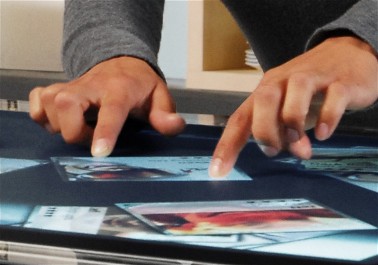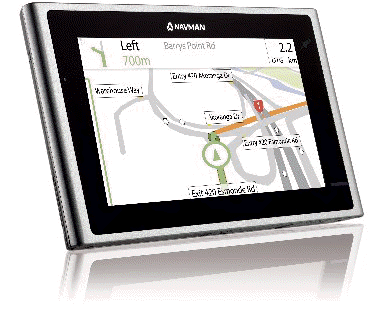|
HOME
Technology Nov 2008 Touch and go at interface New ways to navigate |
|
While experts at the intersection of computing, behavioral sciences and design look into how hardware, software and wetware (us) can work together the reality is most computer users remain totally reliant on advances from a much earlier age.
While keyboards come in all sizes and shapes, often for ergonomic reasons, attempts to re-order the keys or even do away with them have been fiercely resisted. However, advances in pointing and clicking, speaking and touching and animated interaction are beginning to break new ground. While some cellphones respond to simple voice commands, clever voice recognition programmes like Dragon Naturally Speaking from Nuance, claiming up to 99 percent accuracy, have bought great relief to many who are tired of letting their fingers do the talking. Voice recognition has been perfect for some disabled people, legal
offices, writers and others who want to bypass the double handling
dictation machines require. The software can not only translate voice
into text but issue commands to the computer to open, close and execute
commands within certain programs. Pointing the finger Now apparently ‘touching is the new seeing’ when it comes to relating
to computers. The revolutionary Nintendo Wii gaming console for example
works on kinetic feedback principles. The maturity of touch screen
multimedia smart phones, such as the iPhone and its imitators, is
further evidence of the trend. The touch screen or touch pad has supplanted or at least complimented the mouse in some environments, particularly on notebook computers. And Microsoft's Vista operating system has improved support for tablet computers, making their accuracy a serious contender to keyboard supremacy, particularly when used in conjunction with a projector and whiteboard in the lecture theatre or sales presentation.HP’s new TouchSmart all-in-one PC with a 19" and 22" touch screen,
has hardware designed by Kiwi company Next Window, designed to change
people’s behaviour for short transactions in a shared environment. At
the touch of an icon you can go direct to email or web sites for
weather, news, TV, recipes or games. It has a virtual keyboard to input
text and admirably accurate handwriting recognition as well. Below the surface It’s being used in select hotels, restaurants and casinos where patrons can order drinks, make dinner reservations, book shows, watch YouTube videos, play touch screen games and split the bill by dragging menu items onto separate cards. Surface computers, based on Windows Vista, cost around $NZ14,000 each. And interaction with the environment around us can be enabled through smart navigational devices that can identify services and points of interest along the way. Local company Navman has been a pioneer in the field of navigation software for marine and fleet vehicles but is increasingly finding a consumer niche helping drivers and pedestrians reach their destination more quickly and accurately. It’s even programmed to help you avoid red light cameras. Its new Navman S-Series Platinum range (starting at $450) in a 13.5mm brushed metal case has a scrollable "glide" touch screen and a new intelligent search interface. You can input an address, search for a location and it’ll give you verbal ‘turn left, turn right’, type instructions. Visual computing era At the first NVision conference in Silicon Valley computer graphics researchers claimed we are entering the era of visual computing with more lifelike graphics increasing impacting the way the way we act with machinery and computers.The rising tide of digital videos, photos, films and television shows on the Internet is forcing graphics card and chip manufacturers to lift their game to process still and moving images in new ways, that provide greater depth and interactivity. Car makers are using 3D graphics and animation software to help buyers customize new vehicles and take them on virtual test drives and clothing designers can replicate fabric and fashion so finely they can see what it looks like on the client before its even made.
It’s thought 3D animation may soon make an appearance in next
generation social networking sites and computer simulations will become
so realistic that virtual activities will mirror physical experiences. Handwriting recognition remains far from mainstream and relatively
slow, which is why we needed keyboards in the first place. The problem
is most of us just stumble along until we find our own hunt and peck
method which remains with us for life. |
 Despite
billions of dollars of research and development
Despite
billions of dollars of research and development 